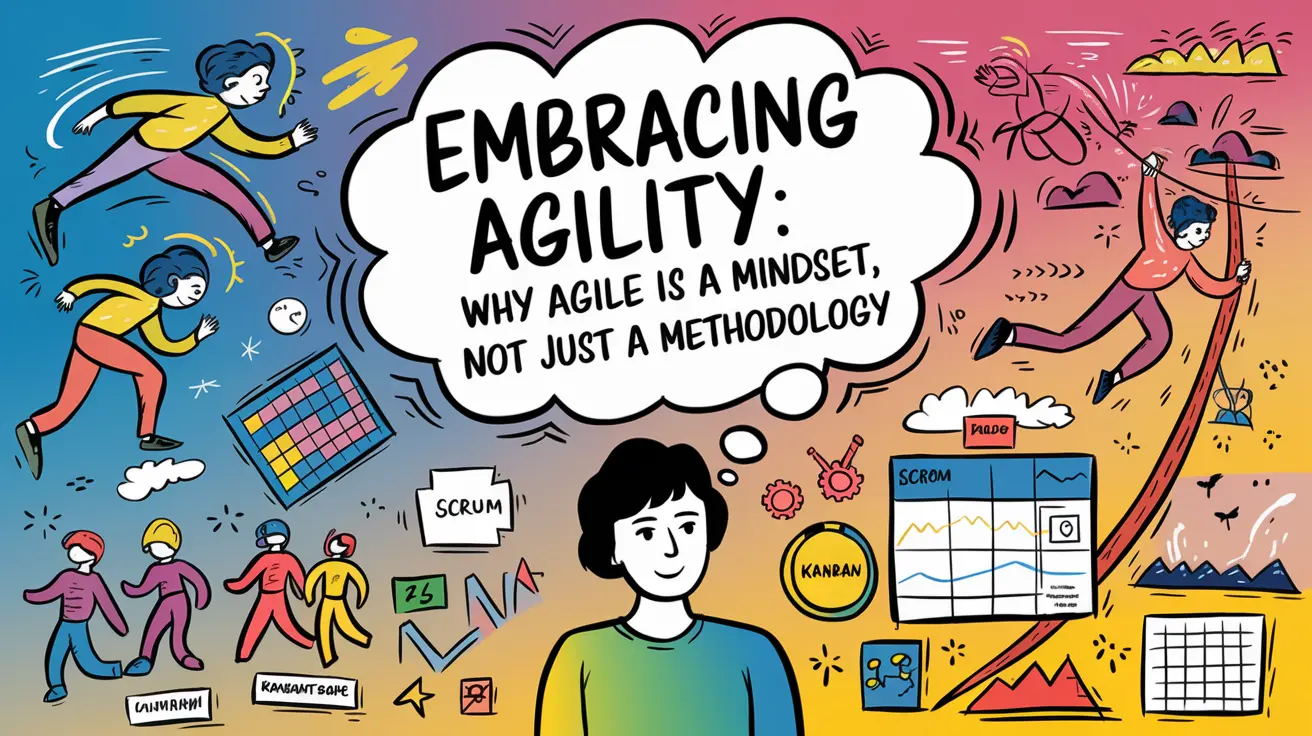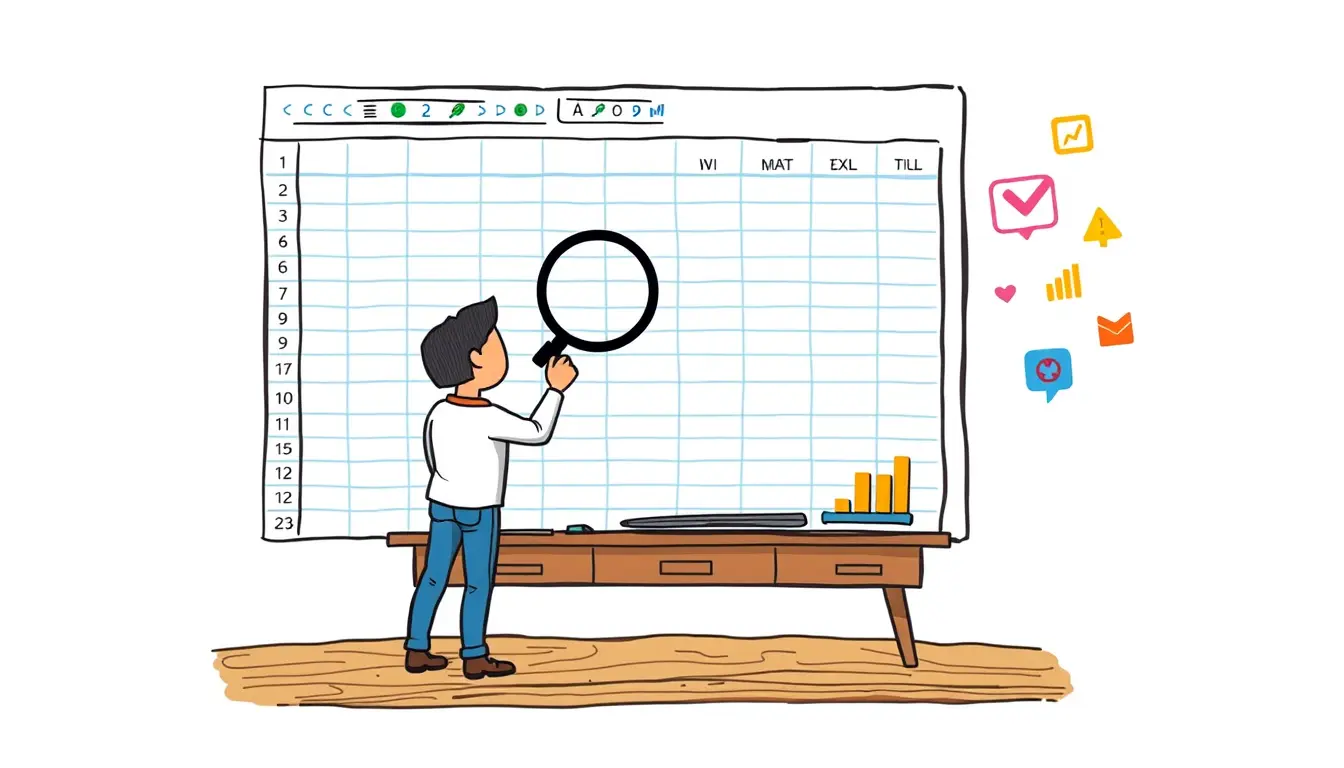Understanding That Agile is a Mindset
Agile is a mindset that goes far beyond a set of practices or methodologies. It’s a way of thinking that emphasizes flexibility, collaboration, and continuous improvement. When we say “agile is a mindset,” we’re acknowledging that it’s not just about following a specific framework like Scrum or Kanban, but about adopting a new approach to work and problem-solving.
The agile mindset is characterized by:
- Embracing change rather than resisting it
- Focusing on delivering value to customers
- Encouraging collaboration and cross-functional teamwork
- Promoting continuous learning and improvement
- Valuing individuals and interactions over processes and tools
Recognizing that agile is a mindset allows organizations to apply its principles more broadly and effectively. It’s not about rigidly following a set of rules, but about cultivating a culture that can adapt quickly to changing circumstances and consistently deliver value.

A Growth Mindset
Developing an agile mindset starts with embracing a growth mindset. This fundamental shift in thinking is crucial for truly understanding and implementing agile principles. A growth mindset, as opposed to a fixed mindset, allows team members to adapt to change more readily and view challenges as opportunities for learning and improvement, aligning with the agile values and principles.The agile manifesto emphasizes individuals and interactions over processes and tools. This core value aligns perfectly with the growth mindset, encouraging continuous learning and personal development. By fostering a growth mindset, organizations can create an environment where agile practices thrive, leading to better results and more innovative solutions.
How to use Confluence and Jira to achieve an agile mindset
Implementing tools like Confluence and Jira can significantly support the development of an agile mindset within teams. These platforms facilitate collaboration, transparency, and iterative work processes, which are key elements of the agile framework. Confluence serves as a central knowledge base, allowing teams to share information, document processes, and collaborate on ideas. This aligns with the agile principle of promoting sustainable value delivery through knowledge sharing. Jira, on the other hand, supports agile project management by enabling teams to break down work into manageable tasks, track progress, and adapt to changes quickly. By leveraging these tools, teams can create a more agile work environment that encourages self-organizing teams and fosters an ongoing process of improvement in their daily work.
Agile Principles
The agile manifesto outlines 12 principles that guide agile practitioners in their work. These principles form the foundation of the agile mindset and help teams achieve better results through iterative development, customer collaboration, and adaptability to change.Some key principles include:
- Satisfying customers through early and continuous delivery of valuable software
- Welcoming changing requirements, even late in development
- Delivering working software frequently
- Building projects around motivated individuals and trusting them to get the job done
- Promoting sustainable development practices
Understanding and internalizing these principles is crucial for developing an agile mindset, which is a set of beliefs that promotes flexibility and responsiveness. It means embracing new ways of working and being open to continuous improvement in how we approach project management and product development.
Becoming agile without an agile mindset – possible or not?
While it’s possible to implement agile methods without fully embracing the agile mindset, doing so often leads to suboptimal results. The agile mindset is the combination of values, principles, and practices that truly define what it means to be agile.Many organizations attempt to adopt agile practices without cultivating the right mindset, resulting in what’s often called “Agile in name only” or “Fake Agile.” This approach typically fails to realize the full benefits of agile, as it focuses on the mechanics of agile processes without embracing the underlying philosophy.To truly be agile and create value, organizations need to embrace the agile mindset at all levels. This involves fostering a culture where failure is seen as a learning opportunity, where teams are empowered to make decisions, and where continuous improvement is part of the company’s DNA.
The Evolution from Methodology to Mindset
The journey from viewing agile as merely a set of methodologies to understanding it as a mindset represents a significant evolution in the agile universe. This shift emphasizes that agile is not just about following specific practices, but about adopting a new way of thinking and working.As agile has matured, practitioners have come to realize that the true power of agile lies in its ability to transform organizational culture and individual mindsets. This evolution has led to the development of various agile frameworks and approaches, such as design thinking and lean startup methodologies, which all share the core values of the agile mindset.The agile mindset is an ongoing process of adaptation and learning. It requires a commitment to continuous improvement, customer-centricity, and the ability to adapt to change quickly. By embracing this mindset, organizations can build and support teams that are better equipped to deliver sustainable value for customers in today’s fast-paced business environment.
The journey of agile from a software development methodology to a broader mindset has been significant. Initially, agile was primarily associated with specific practices in software development. However, as organizations began to see the benefits of agile approaches, they started to realize that the underlying principles could be applied more widely.
This shift from viewing agile as just a methodology to understanding that agile is a mindset has several implications:
- Broader applicability: The agile mindset can be adopted across various industries and departments, not just in IT.
- Focus on principles over practices: While practices are important, the emphasis is on embodying the core principles of agility.
- Cultural transformation: Adopting an agile mindset often requires a shift in organizational culture and leadership styles.
As more organizations recognize that agile is a mindset, they’re better equipped to harness its full potential for driving innovation and adaptability.
Key Principles of the Agile Mindset
Understanding that agile is a mindset means embracing its core principles. These principles guide how individuals and teams approach their work and make decisions.
Embracing Change
The agile mindset means viewing change as an opportunity rather than a threat, aligning with the agile values and principles. This principle is rooted in the understanding that customer needs and market conditions are constantly evolving. By being open to change, agile teams can adapt their plans and deliverables to better meet these shifting requirements.
Customer-Centric Focus
Agile as a mindset puts the customer at the center of everything. This principle stems from the recognition that the ultimate goal of any project or product is to deliver value to the end-user. Being customer-centric in an agile context means regularly seeking and incorporating the customer’s feedback, and being willing to pivot based on customer insights, which is a hallmark of the agile mindset.
Collaboration Over Silos
The agile mindset emphasizes collaboration and breaks down traditional silos. This approach recognizes that diverse perspectives and skill sets lead to better outcomes. Collaboration in an agile environment involves active communication, knowledge sharing, and collective ownership of projects and outcomes.
Continuous Improvement
The principle of continuous improvement, or “Kaizen,” is a cornerstone of the agile mindset. It’s about constantly looking for ways to enhance processes, products, and skills. This principle keeps agile teams from becoming complacent and ensures they’re always striving to be better.
Delivering Value Early and Often
The agile mindset emphasizes the importance of delivering value to customers as quickly as possible. This principle is about breaking work down into smaller, manageable chunks that can be completed and delivered in short iterations. By delivering value early and often, agile teams can get faster feedback and reduce risk.
Cultivating an Agile Mindset in Your Organization
Transforming an organization’s culture to embrace the agile mindset requires commitment and strategic effort. Here are some strategies for fostering an agile mindset across your organization:
- Lead by example: Leadership plays a crucial role in demonstrating that agile is a mindset, not just a set of practices.
- Invest in training and education: Help employees understand and internalize the principles of agility.
- Create cross-functional teams: Break down silos and encourage collaboration across different areas of expertise.
- Implement agile practices gradually: Start with one team or department and expand as you learn about the agile values and principles.
- Foster a culture of continuous feedback: Encourage regular, constructive feedback at all levels.
- Measure and celebrate agile behaviors: Develop metrics that reflect agile values and behaviors.
- Create physical and digital spaces for collaboration: Design environments that support agile ways of working.
By implementing these strategies, organizations can begin to shift their culture towards one that truly embodies the agile mindset.
Overcoming Challenges in Adopting an Agile Mindset
While the benefits of embracing agile as a mindset are clear, the journey to agility is not without its challenges. Common obstacles include:
- Resistance to change
- Lack of leadership support
- Misalignment with traditional processes
- Lack of skills and knowledge
- Fear of failure
- Difficulty measuring progress
- Silos and lack of collaboration
Overcoming these challenges requires patience, persistence, and a commitment to continuous improvement. It’s important to remember that adopting an agile mindset is a journey, not a destination.
The Future of Agile: Trends and Predictions
As we look to the future, it’s clear that the understanding of agile as a mindset will continue to shape how organizations operate. Some trends and predictions include a greater emphasis on the principles of the agile manifesto in various industries.
- Expansion of agile beyond IT into other business areas
- Integration of AI and machine learning with agile practices
- Adaptation of agile principles for remote and distributed teams is essential to understand the agile mindset in diverse settings.
- Evolution of leadership styles to align with the agile mindset
- Development of new frameworks for scaling agility in large organizations
- Increased focus on customer-centric agility
- Incorporation of agile principles in education and professional development
These trends suggest that the agile mindset will continue to evolve and expand its influence across various aspects of business and society.
Conclusion
Understanding that agile is a mindset, not just a methodology, is crucial for organizations looking to thrive in today’s fast-paced, ever-changing business environment. By embracing the core principles of agility – flexibility, collaboration, customer focus, and continuous improvement – organizations can become more innovative, responsive, and resilient.
Adopting an agile mindset requires more than just implementing a set of practices. It involves a fundamental shift in how we think about work, problem-solving, and value creation. While the journey to true agility may be challenging, the benefits in terms of increased innovation, employee engagement, and customer satisfaction make it a worthwhile endeavor.
As we move forward, the organizations that can fully embrace and embody the agile mindset will be best positioned to navigate the complexities of the modern business landscape and drive sustainable success.
FAQ
What does it mean when we say “agile is a mindset”?
When we say “agile is a mindset,” we’re emphasizing that agile is more than just a set of practices or methodologies. It’s a way of thinking that values flexibility, collaboration, and continuous improvement. This mindset guides how individuals and teams approach work, make decisions, and respond to change.
How is the agile mindset different from agile methodologies?
While agile methodologies like Scrum or Kanban provide specific practices and frameworks, the agile mindset is the underlying philosophy. The mindset focuses on principles such as embracing change, delivering value, and continuous improvement, regardless of the specific methods used.
Can you have an agile mindset without using agile methodologies?
Yes, it’s possible to embody the agile mindset without strictly adhering to specific agile methodologies. The core of agile is about being flexible, collaborative, and focused on continuous improvement, which can be achieved through various means.
How can leaders foster an agile mindset in their teams?
Leaders can foster an agile mindset by modeling agile behaviors, encouraging experimentation, promoting open communication, and creating a safe environment for taking risks and learning from failures. They should also empower teams to make decisions and take ownership of their work, reflecting the principles of the agile manifesto.
Is the agile mindset only applicable to software development?
No, while agile originated in software development, the agile mindset can be applied to various industries and departments, illustrating the agile vs traditional approaches. The principles of flexibility, customer focus, and continuous improvement are valuable in many contexts beyond software development.
How does adopting an agile mindset benefit an organization?
Adopting an agile mindset can lead to increased innovation, faster response to market changes, improved customer satisfaction, and higher employee engagement. It helps organizations become more adaptive and resilient in the face of uncertainty.
What are some common challenges in adopting an agile mindset?
Common challenges include resistance to change, lack of leadership support, misalignment with traditional processes, fear of failure, and difficulty in measuring progress. Overcoming these often requires patience, education, and a gradual approach to change.
How does the agile mindset relate to innovation?
The agile mindset promotes innovation by encouraging experimentation, rapid iteration, and learning from failures. It creates an environment where new ideas can be tested quickly and refined based on feedback, fostering a culture of continuous innovation.
Can the agile mindset be applied to personal development?
Absolutely. Applying agile principles to personal development can help individuals think of the agile mindset, becoming more adaptable, focused on continuous learning, and better at breaking large goals into manageable tasks. It encourages a growth mindset and the ability to pivot when faced with challenges.
How is the agile mindset evolving in the current business landscape?
The agile mindset is evolving to encompass broader business agility, with increased focus on customer-centricity, distributed teams, and integration with emerging technologies like AI, making organizations truly agile. There’s also a growing emphasis on applying agile principles to areas like leadership, sustainability, and organizational culture.














Leave a Reply